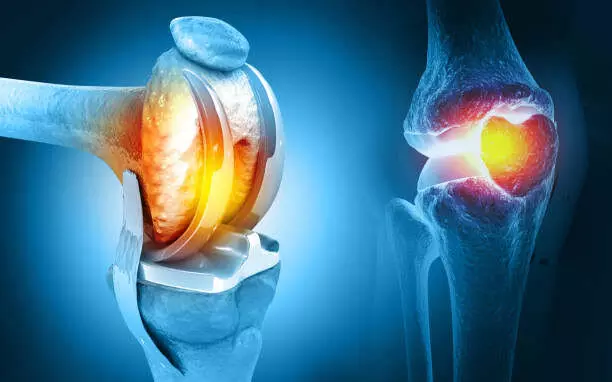Advanced knee surgeries: KIMS ICON Vizag doctors restore mobility in two obese patients
Such individuals often have restricted knee movement, and injuries further compound the difficulty
By Newsmeter Network
Advanced knee surgeries: KIMS ICON Vizag doctors restore mobility in two obese patients
Visakhapatnam: Knee injuries involving ligaments or the meniscus are commonly treated using arthroscopic (keyhole) surgery.
While this is a routine procedure for individuals of average weight, it becomes significantly more complex in obese patients, especially those weighing over 100 kilograms. Such individuals often have restricted knee movement, and injuries further compound the difficulty.
However, in a notable medical achievement, doctors at KIMS ICON Hospital in Visakhapatnam successfully performed advanced arthroscopic surgeries on two obese patients and helped them return to normal walking within a short span.
How was the procedure conducted?
The procedures were led by Dr Kolluru Raviteja, a consultant orthopaedic surgeon at KIMS ICON, who shared the details with the media.
Both patients had a history of obesity linked to family background. The first was a 24-year-old student weighing 136 kilograms who suffered a knee injury while playing a sport. He sustained damage to his posterior cruciate ligament (PCL) and meniscus. The second was a 32-year-old nurse weighing 150 kilograms, who was already undergoing treatment for weight loss. She slipped and fell, resulting in complete tears to her anterior cruciate ligament (ACL) and medial collateral ligament (MCL), and partial injuries to the tibial collateral ligament (TCL) and lateral collateral ligament (LCL). Her injuries left her unable to perform daily tasks and made activities like jogging or running for weight loss impossible.
Due to their excessive weight, both patients had difficulty bending their knees, a crucial requirement for arthroscopic surgery. If the knee cannot be properly flexed, the surgery may fail.
Implants capable of supporting 1,000 kg
Therefore, the surgical team had to overcome the significant challenge of positioning the legs correctly before proceeding with the keyhole procedure. This involved pushing the legs forward to achieve optimal positioning.
The implants used in these surgeries were highly advanced and capable of supporting up to 1,000 kilograms. The procedures utilised ultra-buttons, biodegradable bio-screws and in cases where the ligaments lacked sufficient strength, bio-scaffolds. These materials are designed to provide enhanced durability and support.
Walking exercises for both patients started soon after
Post-operative physiotherapy was critical.
Dr Raviteja emphasised that keeping patients on bed rest for a month or two after such cutting-edge surgeries would be counterproductive. In the case of the young man who underwent ACL and meniscus repair, he was made to walk by the second day after surgery. Within two weeks, he was able to walk with full weight-bearing on the leg. For the nurse, since two major ligaments were involved, rehabilitation was slower. Initially, she was mobilised with the help of braces and allowed to walk by placing only her toes on the ground. Over time, her progress improved, and she was able to walk independently within six weeks.
Both patients were advised to take necessary precautions to avoid further injuries.
Importance of preserving the meniscus
Dr Raviteja explained the importance of preserving the meniscus, which plays a vital role in knee health.
In the past, damaged meniscus tissue was often removed during surgery, but with current medical advances, preserving it helps maintain normal knee function and delays the onset of arthritis. Without proper ligaments or meniscus, the risk of early arthritis increases significantly.
Thanks to the use of titanium buttons, bio-screws and fibre wire, all biodegradable surgical materials, the strength and stability of both patients’ knees were greatly improved. With continued caution and proper care, these individuals can expect to return to normal life and even resume physical activities like jogging or running.
Dr Kolluru Raviteja concluded by stating that modern surgical techniques, combined with timely rehabilitation and patient awareness, can drastically improve outcomes even in highly challenging cases involving morbid obesity.